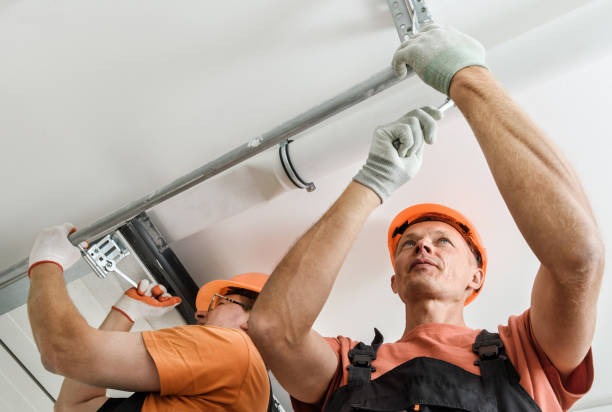Garage doors are an integral part of our homes. They not only protect our vehicles but also serve as a significant entry point into our houses. Therefore, it’s important to choose the right type of garage door opener and understand its maintenance requirements for smooth functioning.
There are three main types of garage door openers: chain drive, belt drive, and screw drive. Chain drive openers use a metal chain to push or pull a trolley that moves the door up and down. These models are reliable and cost-effective but can be noisy, making them less suitable for homes with living spaces near the garage.
Belt-drive openers operate similarly to chain-drive models, but they use a rubber belt instead of a chain. This results in quieter operation perfect for residential areas where noise could be an issue. However, they tend to be more expensive than their counterparts.
Screw-drive openers function differently as they rely on a threaded steel rod rather than a belt or chain to move the door. These models offer strong lifting power with less moving parts which means less maintenance over time; however, they may operate slower compared to other types.
Regardless of the type you choose, regular maintenance is crucial in ensuring your garage door opener lasts long and operates efficiently. Lubrication is one key aspect that should never be overlooked when it comes to maintaining your opener. All moving parts including chains or screws should be lubricated at least twice annually using silicone-based lubricants designed specifically for garage doors.
Another critical aspect involves checking all hardware such as bolts and screws regularly – tightening any loose ones immediately. The balance of your garage door should also be checked periodically by disconnecting explore the possibilities door and manually opening it halfway; if it doesn’t stay put then adjustments might need to be made by professional technicians.
Safety features like auto-reverse mechanisms must always remain functional too – test this by placing an object like wood board on the ground where the door would close. If the door doesn’t reverse upon hitting the object, it’s time to call in a professional.
Lastly, remember that garage door openers are not meant to last forever. Even with regular maintenance, most models will need replacement after 10-15 years of service. Always consider hiring professionals for installation or major repairs as DIY can lead to accidents and void warranties.
In conclusion, understanding different types of garage door openers and their maintenance requirements is crucial for homeowners. It helps ensure smooth operation, enhances safety, and prolongs the lifespan of your device while saving you costly repair bills in the long run.


